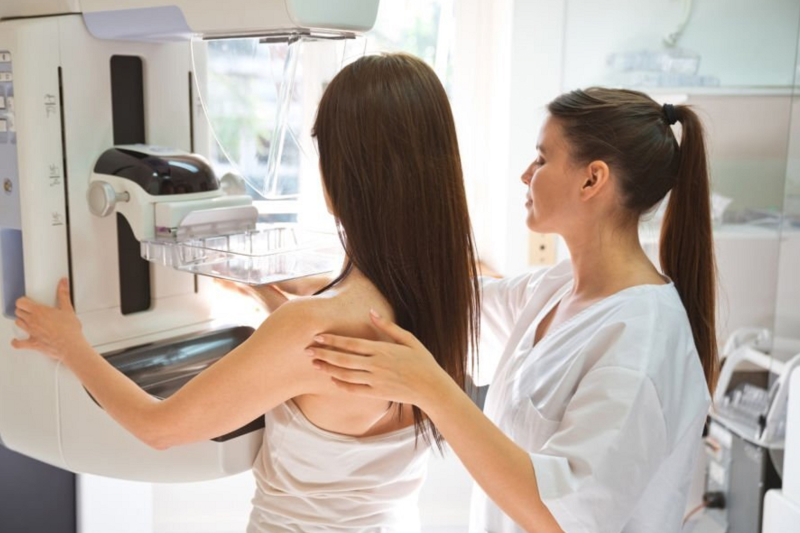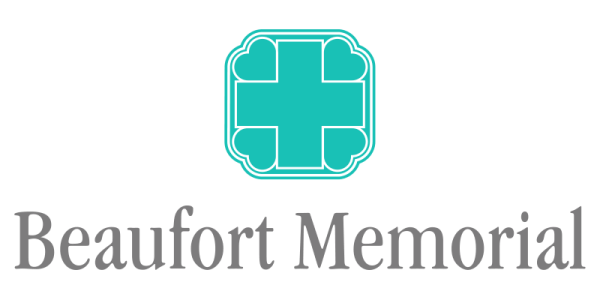
If you’re at average risk for breast cancer, the American Cancer Society recommends annual mammograms starting no later than age 45. You can then switch to every other year after age 55.
“No matter what age you are, it’s important to take control of your breast health,” says Dr. Evan J. Wolff, a board-certified radiologist at Beaufort Memorial who is fellowship-trained in breast radiology. “A little effort can make all the difference in creating a positive experience.”
Here’s how to make the most of your breast screening.
Read More: What Is a Mammogram? Understanding the Utility and Purpose
Schedule It at the Right Time
Your mammogram should fit into your social calendar and monthly cycle.
While you can undergo a mammogram at any time of the month, the Centers for Disease Control and Prevention recommends against mammograms during your period or the week leading up to it. During the last two weeks of your cycle, your breasts may go through changes.
They may:
- Be tender to the touch
- Become more dense
- Swell
Because of these changes, your mammogram experience may be less comfortable. Additionally, your mammography images may be less clear, making it harder to detect potential cancers.
To avoid these issues, schedule your first mammogram and every other one during the first couple of weeks of your cycle.
Pick a Trusted Mammogram Provider
When scheduling your mammogram, make sure your healthcare provider of choice has experience and advanced technology.
- Experience — A screening mammogram looks for signs of cancer. If this detects potential cancer, a diagnostic mammogram confirms or denies the presence of cancer. Your mammography provider should have experience with both types of mammography.
- Technology — A mammogram is an X-ray that photographs breast tissue. New digital technology (digital breast tomosynthesis) takes pictures from multiple angles. These combine to produce three-dimensional images. “With 3D mammography, you get more thorough imaging,” Dr. Wolff says. “This reduces the likelihood that you’ll need repeat tests. It also makes it easier to detect breast cancer in women, even in dense breast tissue.”
Read More: 5 Questions About Mammograms Answered
When a mammogram detects cancer, other tests, such as a breast biopsy, confirm the diagnosis. Seeking a care provider with additional testing and imaging services leads to a seamless diagnostic process. Other tests offered at Beaufort Memorial include:
- Biopsy — Your healthcare provider removes a small bit of suspicious tissue from your breast. Laboratory experts review the sample for cancerous cells. This test has the final say in a breast cancer diagnosis.
- MRI — A breast MRI is a painless test that takes clear images of breast tissue. It can help provide clarity if other screening tests are abnormal.
- Ultrasound — An ultrasound of the breasts can provide information helpful for finding breast cancer. It’s often used in women before they begin annual mammograms. Women with dense breasts may benefit from automated breast ultrasound screening (ABUS), along with an annual mammogram.
Dress for Mammogram Success
“Believe it or not, what you wear to your mammogram matters,” Dr. Wolff says. “Wear the wrong outfit, and you may make your experience less than ideal.”
How should you dress up for your appointment? Here are a few dos and don’ts.
- Beauty products — Powder, lotion, cosmetics, perfume and deodorant can cause abnormalities in your screening. Don’t use them on the day of your exam. If you do have any products on your breasts or armpits, request a wipe to clean the breast and armpit areas before your exam.
- Clothing — When you come for a mammogram, you have to change into a gown. To make the transition easy, wear a blouse and a skirt, shorts or pants. This way, you can keep your lower half covered throughout your experience.
- Jewelry — Before your exam, you must remove dangling earrings and necklaces. To prevent the risk of losing any jewelry, it’s best to leave it at home.
- Shoes — Unlike some imaging tests, a mammogram requires you to stand during the screening. Prevent foot pain by wearing comfortable shoes and saving your high heels for another day.
Eat, Drink and Medicate
Some screenings, such as a colonoscopy, require preparation. Mammography doesn’t require any changes to your normal routine. You can carry on as you normally would.
So, go to bed at your normal time. Then wake up, eat breakfast, drink water and other fluids and take your medication as prescribed. Keeping to your normal diet and schedule will keep you in a good mood and won’t affect your mammogram results.
Read More: Breast Cancer Screening for Women With Dense Breasts
Give Your Mammography Technologist the Scoop
Communication plays a big role in a positive mammography experience. Before heading to the mammography machine, tell your technologist about anything that could affect your test results, such as:
- Being pregnant or breastfeeding
- Changes or problems you’ve noticed in your breasts, such as breast pain
- Difficulty standing without a walking device, such as a cane or walker
- Feeling dizzy or lightheaded at any point during your mammogram
- Having breast implants
You should also bring a list of your medications. If you prefer, bring your medications with you instead.
All of this information allows your technologist to better serve your needs. It helps you stay safe during your exam and ensure any potential problem areas are investigated.
Ignore the Mammogram Myths
There are many myths about mammograms. Believe them, and they can keep you from the breast healthcare you deserve.
Read More: Do Mammograms Hurt?
Common myths you may believe include:
- Insurance won’t cover it — Most health plans, including Medicare, cover annual mammograms.
- It hurts too much — Compressing your breasts can be uncomfortable, but few women find the screening painful. If a mammogram causes pain, over-the-counter pain medication should help.
- It takes too long — Even the busiest schedules have room for an annual mammogram. In just 30 minutes, you can find out whether you have breast cancer. This quick screening can possibly save your life.
- It’s not for me — “High breast density, a family history of breast cancer and never breastfeeding put women at higher risk for breast cancer,” Dr. Wolff says. “However, you can get breast cancer without any risk factors. Regardless of your risk level, undergoing regular mammograms is essential for everyone.”
- The copay is too high — Many programs are available to offset your out-of-pocket mammography cost. At Beaufort Memorial, MDsave provides up to 60% off your next mammogram.
Now that you know these myths are myths, what are you waiting for? Schedule your annual mammogram to detect breast cancer early, before it spreads beyond the breasts. To further your breast cancer knowledge, take our breast health quiz.
Call 843-522-5015 to schedule a mammogram today.
